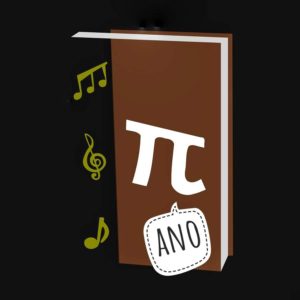A Deep Connection Between Math and Music
There is so much to music that I want to explore, beyond just the aspect of performance (which is a limitless and dense subject in and of itself). But for now, I’ve decided to dedicate some posts to explo ring less common or famous aspects of music. In particular, I want to talk about the connections between music and other broad subjects, today’s topic being math.
ring less common or famous aspects of music. In particular, I want to talk about the connections between music and other broad subjects, today’s topic being math.
Although not the most outstanding mathematician, I do have a strong inclination (See more about Christopher at the bottom of this post) towards the subject. Being a music lover and performer as well, I’ve been looking into ways to combine these two subjects, and there is more to it than most people probably realize.
Music and math – a natural pairing
Some direct relationships between math and music include rhythm and counting, which involve some understanding of fractions and developed pattern recognition in order to really excel at. Looking de eper, one can look at the sounds produced in music as an assortment of sound waves of varying frequencies. Kent State University has an interesting article titled “The Connection Between Music and Mathematics” that explains the connections in a little more detail.
eper, one can look at the sounds produced in music as an assortment of sound waves of varying frequencies. Kent State University has an interesting article titled “The Connection Between Music and Mathematics” that explains the connections in a little more detail.
Math is part of music – but it can also enhance your understanding and studies
What I’m really interested in, however, is a slightly different perspective: how to use mathematics in music. More specifically, making estimates on aspects of music that can be quantified. (I’ve used this type of estimates in Biology, where having a reference value for desired data is sometimes used to help predict or confirm findings).
How Much Classical Music Does the Average American Hear? See the Math
I was eager to apply math in my music also. I have actually done my own estimate on the amount of live classical music heard by the typical American, which I am sharing in this analysis: how much classical music does the average American hear. I find this use of mathematics in music to be fun and rewarding, especially when I can estimate something that is close to measured data.
A famous estimate that has been done tells the number of piano tuners in Chicago using nothing but population data and basic assumptions. This problem is known as Fermi’s Piano Tuner Problem.
Although these estimates are never going to give you amazing accuracy in finding the actual numbers, using them to give yourself a baseline or to verify measured data can be very helpful.
If the assumptions you make and the starting numbers are relatively accurate, then you may be suspicious if measured results differ from your estimate by ten times or more. I can imagine this being useful in predicting or verifying data regarding logistics and demographics of the music world.
I hope this inspires you to consider your own use of math in music. Both in your playing and in understanding the field and study of music.
About Christopher Richardson, Math and Music:
[Editor’s note: As a pre-med student with triple majors in Economics, Biology, and Music at University of California Berkeley, Christopher Richardson brings the mind of a scientist and mathematics “nerd” to this post. We love that, and we hope this series brings joy to some of his fellow “math and music nerds.”]